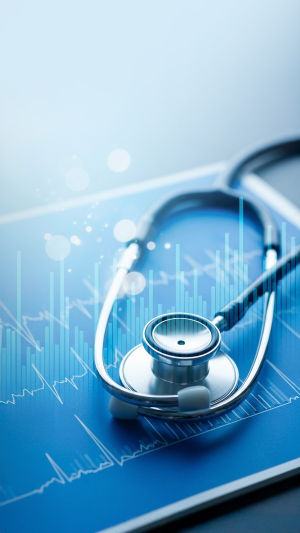You've probably noticed it during your last checkup: your doctor glancing at a sleek monitor beside the exam table, clicking through colorful graphs, lab trends, and real-time vitals—none of which you can see.
That screen isn't just for notes. It's a live command center, pulling data from smart beds, ECG patches, remote monitors, and hospital-wide systems to spot risks you'd never notice. And increasingly, it's helping clinicians intervene before a small issue becomes an emergency.
<h3>The Rise of Smart Clinical Dashboards</h3> Modern exam rooms and hospital wards are equipped with integrated digital platforms that aggregate patient data in real time. These aren't generic apps—they're secure, FDA-regulated systems that turn fragmented health signals into actionable insights.
<b>1. Centralized vital monitoring</b> – In hospital rooms, smart beds and wall-mounted sensors feed heart rate, respiration, and oxygen levels directly to the nursing station. If a patient's breathing slows abnormally, the system alerts staff instantly.
<b>2. AI-assisted ECG interpretation</b> – Devices like the GE Marquette MUSE system analyze electrocardiograms in seconds, flagging subtle arrhythmias that even experienced cardiologists might miss on first glance.
<b>3. Real-time lab integration</b> – When your bloodwork comes back, results appear automatically in your doctor's electronic health record (EHR) system—highlighted if potassium is low or creatinine is rising, signaling possible kidney stress.
Dr. Amy Abernethy, former Principal Deputy Commissioner of the U.S. Food and Drug Administration and a leading voice in health data innovation, has emphasized that the future of care isn't just more data—it's smarter synthesis. Clinicians need tools that surface what matters, when it matters. That's exactly what these clinical dashboards aim to do: cut through noise and spotlight true clinical signals.
<h3>How These Systems Prevent Crises</h3> The real power isn't in collecting data—it's in predicting trouble before it happens.
<b>1. Early warning scores (EWS)</b> – Hospitals use systems like the Epic EWS or Philips IntelliVue to calculate risk scores based on vitals. A rising score triggers rapid response teams—even if the patient "seems fine."
<b>2. Remote ICU monitoring</b> – In "eICUs," off-site intensivists watch dozens of critical patients via screen, using AI to detect sepsis onset up to six hours earlier than traditional methods.
<b>3. Medication safety alerts</b> – If a prescribed drug interacts dangerously with a patient's existing condition or meds, the EHR flashes a red warning before the order is finalized—preventing harmful errors.
<h3>Navigating Privacy and Accuracy</h3> These tools are powerful, but they're not magic. Trust depends on rigorous standards.
<b>1. Look for FDA-cleared platforms</b> – Systems like Cerner, Epic, and Medtronic's Patient Care Software undergo clinical validation. Ask your provider if their monitoring tools are FDA-regulated.
<b>2. Understand data limits</b> – Algorithms assist but don't replace judgment. A flagged rhythm still requires a cardiologist's review.
<b>3. Know your rights to data</b> – You can request access to your full EHR, including clinician notes and device readings—helping you stay informed and involved.
<h3>What This Means for You</h3> Even if you never see the screen, its presence changes your care—for the better.
<b>1. Speak up during visits</b> – If your doctor is focused on the monitor, ask: "What are you seeing?" You might learn your blood pressure trend has improved over three visits.
<b>2. Request remote monitoring if eligible</b> – For heart failure or COPD, clinics often issue home devices that feed data directly to the care team, reducing hospital readmissions.
<b>3. Review your portal after appointments</b> – Many EHRs now offer patient portals where you can see your vitals, lab trends, and care plans—turning you into an active partner.
That screen in your doctor's office isn't just a display—it's a bridge between raw biology and human insight. And while you may never log into it yourself, its presence means someone is watching, analyzing, and acting on your behalf—with greater speed and precision than ever before.
The best part? You don't need to understand the code or the algorithms. You just need to show up, ask questions, and trust that behind that quiet glow is a whole system working to keep you safe—before you even know you're in danger.





